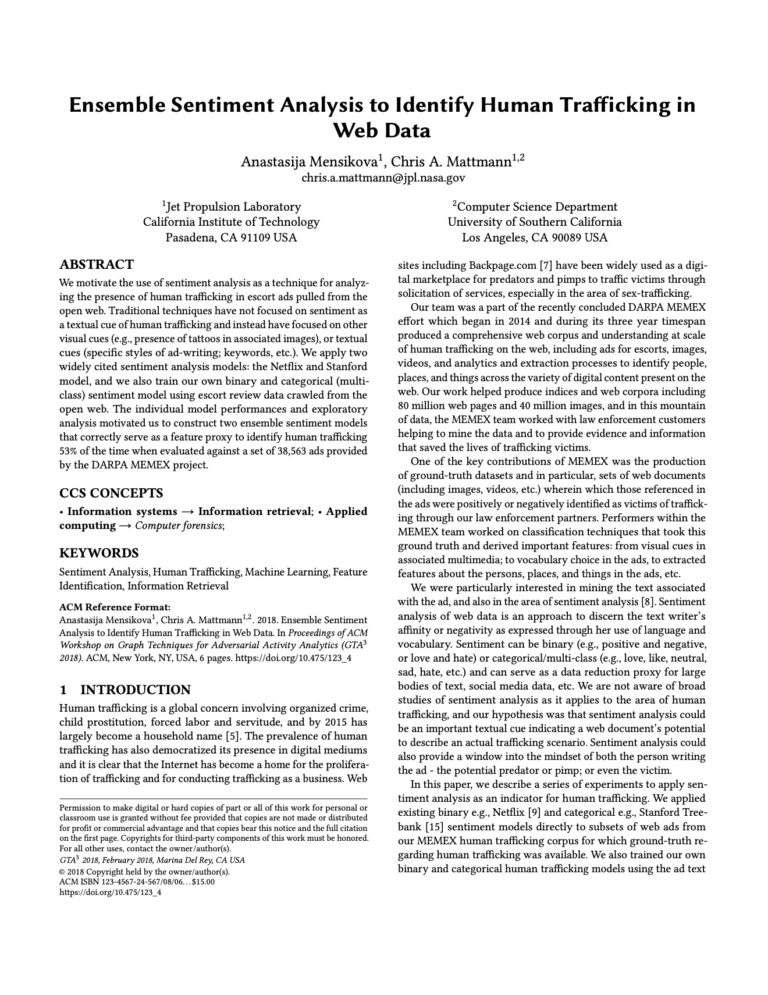This guide promotes the use of sentiment analysis as a technique for analyzing the presence of human trafficking in escort ads pulled from the open web. Sentiment analysis of web data is an approach to discern the text writer’s affinity or negativity as expressed through her use of language and vocabulary. The prevalence of human trafficking has also democratized its presence in digital mediums and it is clear that the Internet has become a home for the proliferation of trafficking and for conducting trafficking as a business. Many websites have been widely used as a digital marketplace for predators and pimps to traffic victims through solicitation of services, especially in the area of sex-trafficking. Traditional techniques have not focused on sentiment as a textual cue of human trafficking and instead have focused on other visual cues (e.g., presence of tattoos in associated images), or textual cues (specific styles of ad-writing; keywords, etc.). This guide applies two widely cited sentiment analysis models: the Netflix and Stanford model, and also its own binary and categorical (multi- class) sentiment model using escort review data extracted from the open web. The individual model performances and exploratory analysis motivated researchers to construct two ensemble sentiment models that correctly serve as a feature proxy to identify human trafficking 53% of the time when evaluated against a set of 38,563 ads provided by the DARPA MEMEX project.

